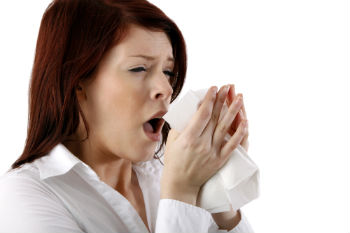 Mold exposure produces irritating substances which might act as allergens (substances that cause allergy) in sensitive people. Moreover, some types of mold produce the toxic substances called mycotoxins. However, mold itself isn’t toxic or poisonous. The conditions under which toxins are produced by some molds are not properly understood and mold’s presence, even the presence of mold which can produce the toxins, doesn’t always mean that the toxins are getting produced. There might not be any health effects because of mold or it might lead to some symptoms in some people, including children and adults, who are sensitive to mold.
Mold exposure produces irritating substances which might act as allergens (substances that cause allergy) in sensitive people. Moreover, some types of mold produce the toxic substances called mycotoxins. However, mold itself isn’t toxic or poisonous. The conditions under which toxins are produced by some molds are not properly understood and mold’s presence, even the presence of mold which can produce the toxins, doesn’t always mean that the toxins are getting produced. There might not be any health effects because of mold or it might lead to some symptoms in some people, including children and adults, who are sensitive to mold.
The most common effects of mold on health are the allergic reactions. Allergic reactions might happen immediately or they might develop after some period of time following the exposure. Both mold spores and growing mold might lead to the allergic reactions.
Signs and symptoms of mold exposure and mold allergy might include:
- Runny nose
- Sneezing
- Coughing
- Wheezing
- Redness of eyes
- Itchy eyes
- Rash or skin irritation
In people who are allergic to mold and have asthma, mold spores or mold might cause asthma attacks. Even in the non-allergic individuals, mold can irritate skin, airways and eyes. For example, toxins called mycotoxins are produced by “black mold” Stachybotrys and some other mold types. These mycotoxins can cause irritation of airways and skin in the susceptible individuals.
Sometimes, people can develop severe reactions to the mold exposure. The symptoms of the severe reactions which are not that common include difficulty breathing and fever. People having compromised immune system or those with the chronic lung disease can develop serious infections of lungs because of mold.
Predicting the degree of severity of health risks that are associated with mold in home isn’t possible. The individuals allergic to mold vary in the degree of susceptibility to mold, and risk might also depend upon the exact type and extent of mold that’s present.
In the year 2004, it was found by the Institute of Medicine that there was enough evidence to link the indoor exposure to mold with the upper respiratory tract symptoms, wheezing and cough in otherwise healthy people. It was also found that mold can cause the symptoms of asthma to worsen in the people having asthma. It was also reported that mold is linked to the hypersensitivity pneumonitis in the individuals susceptible to immunologic condition. It is an uncommon disease which is similar to pneumonia and it can develop in the susceptible individuals after prolonged or brief exposure to mold.